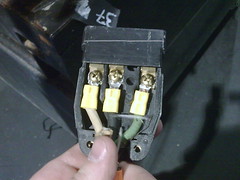Inspired by:
And one of my test questions:

Somewhere on here we once had a discussion regarding "Do you check (X) The most-likely possibility, or (Y) The easiest-to-check possibility; when trouble-shooting?" but I can't find that thread, so let's start over.
(Z) Maybe a list of all the reasons why a light might not light, and then after a week we'll prioritize them?
And since it's been a while, let's make this a OotD--students only for one week, please.
And one of my test questions:
It appears [USER]NevilleLighting[/USER] and I already have differing opinions._____ If a fixture does not light up when the board operator calls it up, what’s the FIRST thing to check?
A. Lamp; B. Dimmer; C. Multi-Cable; D. DMX Cable
Somewhere on here we once had a discussion regarding "Do you check (X) The most-likely possibility, or (Y) The easiest-to-check possibility; when trouble-shooting?" but I can't find that thread, so let's start over.
(Z) Maybe a list of all the reasons why a light might not light, and then after a week we'll prioritize them?
And since it's been a while, let's make this a OotD--students only for one week, please.
Last edited:




